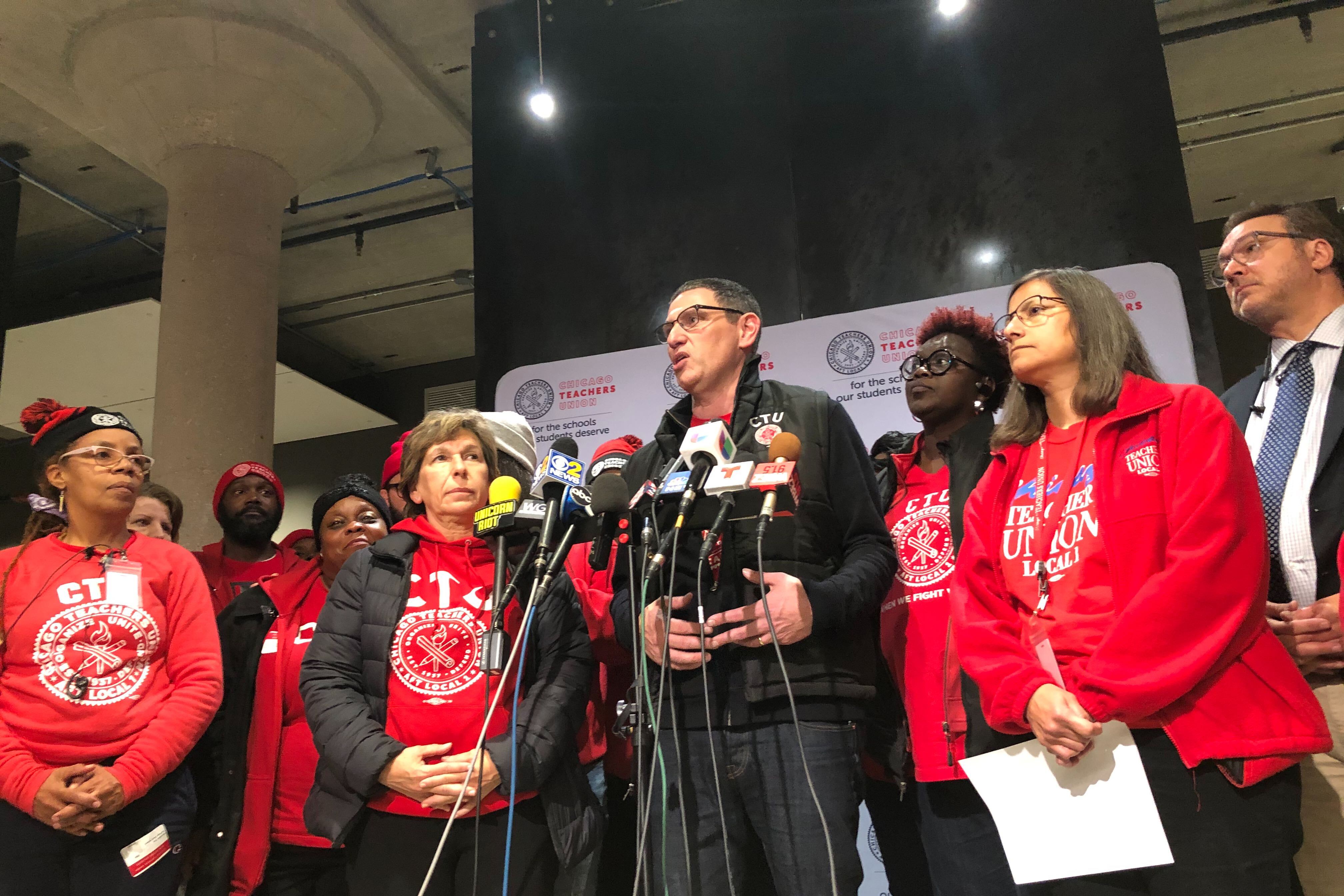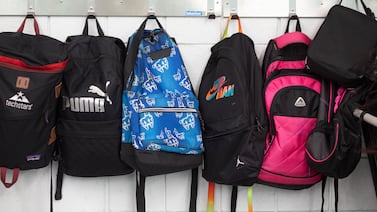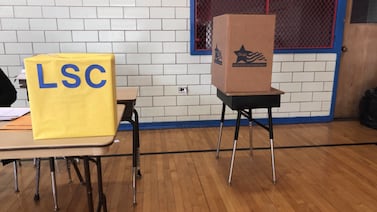As Chicago weighs a school reopening plan for the year’s second quarter, one thing is conspicuously absent: an agreement with the city’s restive and powerful teachers union.
In some other large urban districts, such as Los Angeles and Boston, written agreements with unions have spelled out issues like contact tracing plans and learning hours in this unprecedented school year.
But though Chicago schools officials have met regularly with the Chicago Teachers Union representatives, they haven’t agreed on a road map or even on the need for one.
That lack reflects a deep, long-standing tension between the union and the city. The union does not want to return to buildings without a long list of safety measures and assurances, while the city has indicated it wants to open campuses where possible. The split adds to citywide uncertainty about how schools can reopen and function.
Now the union’s criticism of the district is growing more pointed, and more public, as leaders say they want to be brought in to Chicago’s reopening conversations. But the union has limited options.
If the city plans to reopen schools without winning union agreement, the union may file a grievance or labor lawsuit — which might not win district compliance. Or it may threaten to walk out, which risks heightening school disruption for a weary school community.
Still, the teachers union retains a veto power of sorts.
“If you want to reopen schools, you pretty much can’t do it without the consent of your teachers,” said Jon Shelton, an expert on labor and school districts at the University of Wisconsin in Green Bay. “The power teachers unions have does not just come from contracts. It comes from members being able to take concerted action.”
This week, schools chief Janice Jackson said again she worries that remote learning is deepening disparities facing low-income students and that virtual classrooms are not replacements for in-person learning. She promised a second-quarter decision “soon.”
With COVID-19 test-positive rates in Chicago hovering around 4.4%, and the recent coronavirus death of a first grade Chicago Public Schools teacher, the district must consider metrics that change daily and the reality that case counts are higher in some Black and Latino neighborhoods than in the city as a whole. Meanwhile, the reopening of classrooms in the Chicago suburbs and in urban districts such as Miami-Dade and Denver is putting pressure on district leaders.
Since the summer, the union and district have been bargaining twice a week, union leaders said.
District officials refused to say whether they are working toward a written agreement for a school reopening and how any discussions are going. But they have said they will continue to meet with the union.
Union representatives said that the two sides have agreed on small issues, particularly around remote learning. The union said the district is considering a union request to not tie observations, done for teacher evaluation, to job security. The sides are discussing remote learning practices, such as whether teachers must always have their cameras on, and what they’re able to record during live instruction, the union said.
Union leaders want the city to bargain the details of school reopening. They complain that the district has not proposed how to handle the second quarter, which starts Nov. 9.
They said district Chief Operating Officer Arne Rivera and second-in-command LaTanya McDade have not attended recent talks. Instead, the district has sent labor relations officer Caitlin Gerard, the Chief Talent Officer Matt Lyons, and an attorney with the Franczek law firm to bargain. To union leadership, that indicates that the district is not serious about the negotiations.
Union Vice President Stacy Davis Gates said that last summer the district informed the union of reopening plans only days, and sometimes just hours, before they were released publicly.
That has frustrated union leaders.
“I can’t make a decision without having something to react to,” Gates said. “What has changed since March that would make reopening safe? We need to be able to answer that.”
University of Illinois at Urbana-Champaign labor expert Bob Bruno said the law doesn’t obligate the school district to secure an agreement on its reopening plan, but the district must bargain any impact on teacher working conditions. From a labor relations standpoint, he said, it’s best practice to develop a plan collaboratively.
The biggest sticking point, experts said, may be in-person learning.
“I think these agreements are extremely important,” says Brad Marianno, a professor of education policy and leadership at the University of Las Vegas, who has been tracking about 250 district reopening agreements since spring. “Districts and unions need to get to the bargaining table to hammer out those details. It gives teachers a sense of stability if you have a plan in place that’s legally enforceable.”
An analysis by the National Council on Teacher Quality shows 15 out of the 21 large urban districts it tracked that had formal agreements in the spring also negotiated agreements for the fall.
What was in each of those agreements varied, said the council’s policy specialist Shannon Holston. “What is in those agreements is driven by local context —- for example, California districts have instructional minutes but others don’t get into that at all,” she said.
What’s the picture in other places?
Some large urban districts never crafted reopening agreements with their unions, Marianno said. Districts generally sought to preserve flexibility in an uncertain school year, he said.
Districts that did negotiate agreements haven’t gotten everything they wanted.
In Los Angeles, a memorandum of understanding specifies a school day running from 9 a.m. to 2:15 p.m., with Monday largely dedicated to teacher preparation; the district initially had pushed for teachers logging on to live classes from their empty classrooms.
The Chicago Teachers Union has held up the Los Angeles agreement as a model of productive collaboration.
In St. Paul, Minnesota, the district had insisted on daily live instruction for students. Its union pushed back, and the agreement settled on “regular” contact.
“Districts are in a very, very difficult position in these negotiations,” said Marianno, noting that an impasse or a strike can severely disrupt learning after enormous upheaval.
Does having a plan promise a smooth reopening?
Having a plan is not a guarantee. In New York City, which has had bumps and turns in trying to reopen schools, the city managed to ink an agreement with the teachers union but its complicated promises created a staffing crisis that further delayed reopening.
In Chicago, the case of school clerks may indicate the rough road ahead.
After the district called in school clerks and technology coordinators, the union filed an unfair labor practice lawsuit. The union prevailed in the suit: The judge ruled that any work that could be done remotely should be done so, to ensure clerks’ safety.
While arbitration is binding, the district rejected the arbitrator’s findings and promised to appeal the ruling. The union said that response “flouted” the rules of arbitration.
Without an agreement, the arbitrator will issue a ruling on in-school work for clerks. Until then, the 1,000 school clerks and tech support staff at the center of the dispute are still going into school buildings, without an agreement regulating their working conditions.








